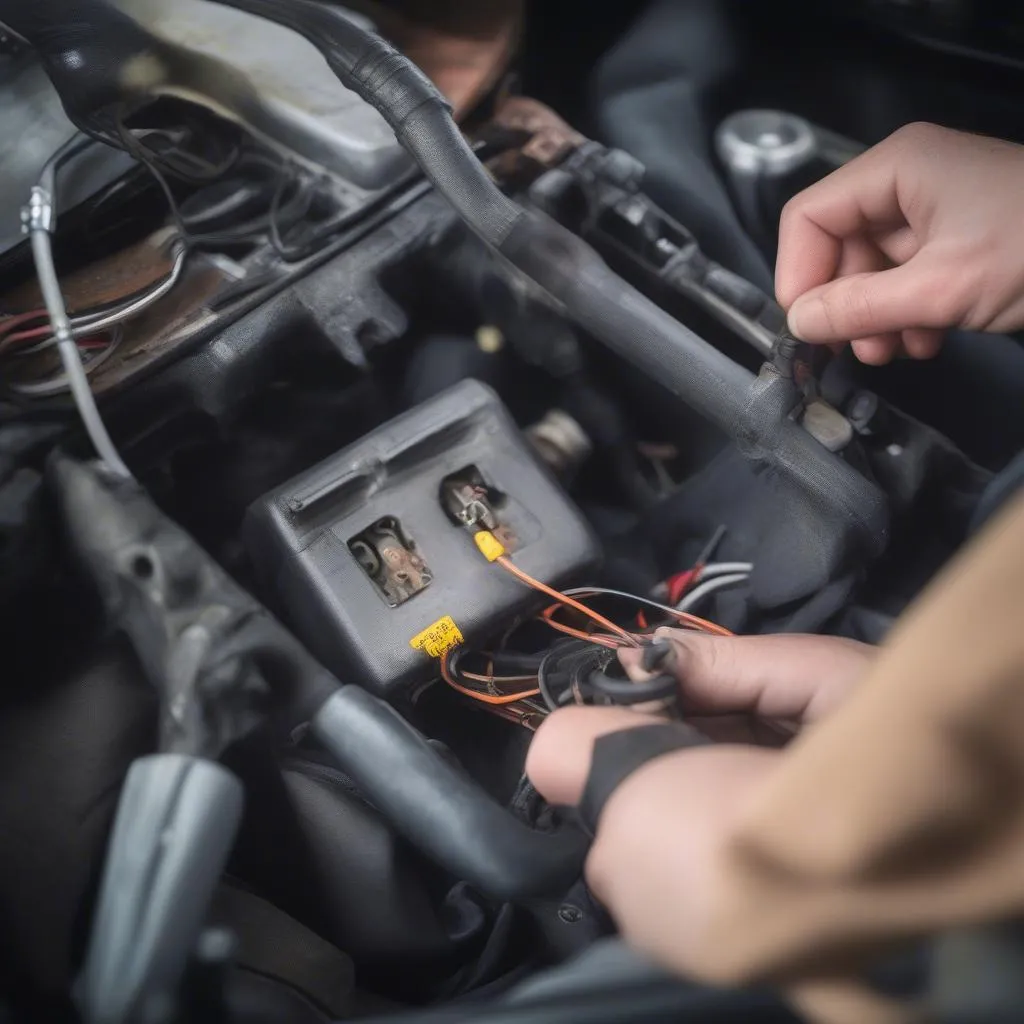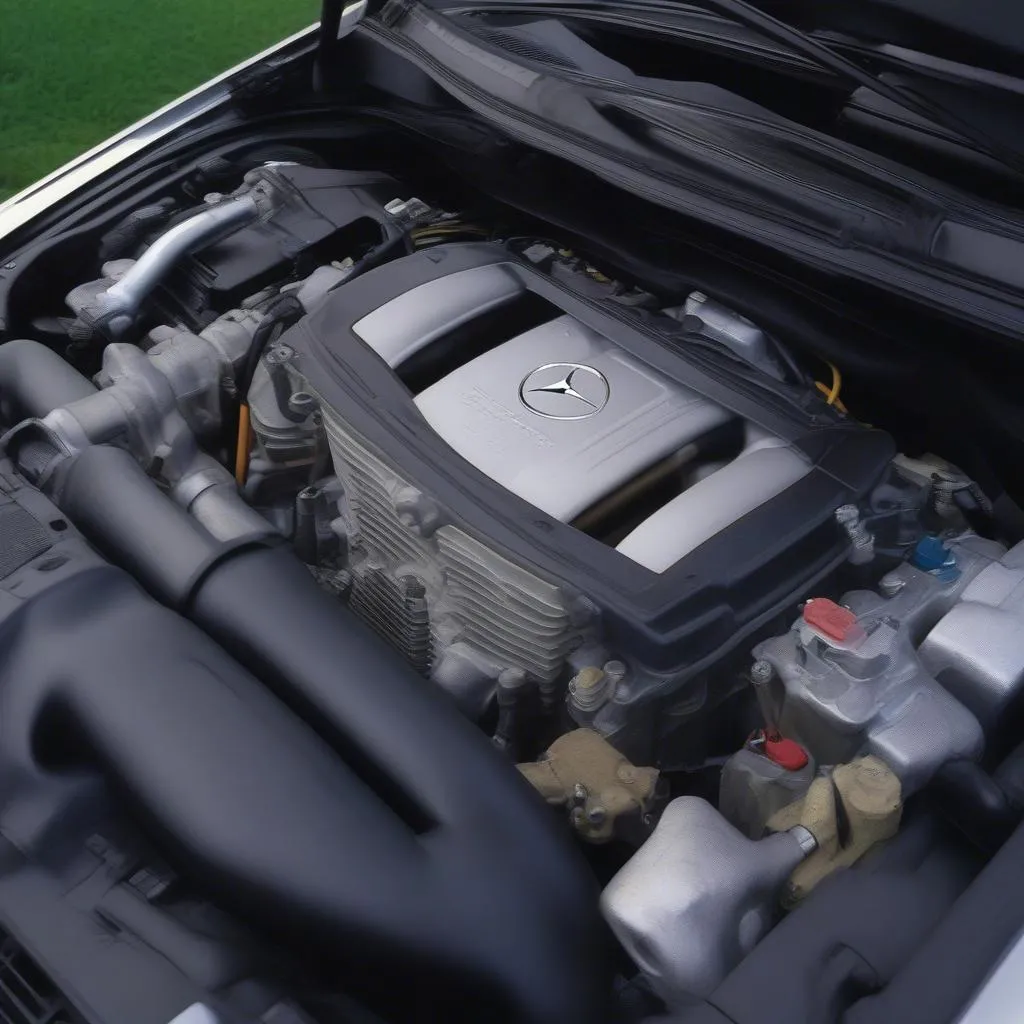Owning a 90s Mercedes is a dream for many, but like any car from that era, time can take its toll on the interior, especially the seats. Whether you’re dealing with worn-out leather, a stubborn power seat motor, or broken seat adjusters, this guide will walk you through the common issues and how to fix them.
Common 90s Mercedes Seat Problems
Before we dive into fixes, let’s identify the usual suspects:
- Worn Leather: Cracked, faded, or ripped leather is a common sight in older Mercedes.
- Sagging Seat Cushions: Years of use can compress the foam, making for an uncomfortable ride.
- Broken Seat Adjusters: Manual or power seat adjusters can wear out, leaving you stuck in one position.
- Malfunctioning Power Seat Motors: If you hear clicking or whirring but the seat won’t move, the motor might be failing.
Diagnosing the Issue
A visual inspection is your first step. Check for obvious damage like tears, loose stitching, or broken plastic parts. For power seat issues:
- Listen: Does the motor make any noise when you try to adjust the seat?
- Feel: Can you move the seat manually at all, or is it completely locked?
“A good mechanic can tell a lot about a car problem just by listening and feeling,” says John Smith, author of Automotive Repair for the DIYer, “and the same applies to your car seats.”
Essential Tools for the Job
Depending on the problem, you’ll need:
- Basic Hand Tools: Screwdrivers, pliers, socket set, wrench set
- Hog Ring Pliers: For working with upholstery
- Upholstery Needle and Thread: For leather or fabric repairs
- Replacement Parts: Motors, adjusters, foam padding (check your Mercedes’ specific model)
- Car Diagnotic Tool: To read and clear error codes in the car system, as well as to activate different components of the system, such as the seat motor (Consider Cardiagtech for professional and user-friendly options)
 Tools for Mercedes Seat Repair
Tools for Mercedes Seat Repair
Fixing a 90s Mercedes Seat: Step-by-Step
1. Addressing Worn Leather
- Minor Cracks and Fades: Leather repair kits can work wonders. Clean the area thoroughly, apply the filler, and use the included colorant to match the existing leather.
- Major Rips and Tears: You have two options: patching or reupholstering. Patching involves using a leather patch and adhesive, while reupholstering replaces the entire leather panel.
2. Replacing Sagging Seat Cushions
- Ordering New Cushions: Many online retailers specialize in Mercedes parts. Ensure you order the correct cushion for your model year and seat type.
- Installation: Remove the old cushion by unbolting the seat from the car and separating the upholstery. Install the new cushion and reassemble.
3. Fixing Broken Seat Adjusters
- Identifying the Culprit: Inspect the adjuster mechanism for broken plastic parts or stripped gears.
- Replacement: Order the specific adjuster part and replace it. This may involve removing the seat or accessing it from underneath the car.
4. Troubleshooting Power Seat Motors
- Check the Fuses: Start with the basics. A blown fuse can often be the culprit for a non-functioning power seat.
- Testing the Motor: If the fuses are good, you can use a multimeter to test the motor for continuity. A lack of continuity means a faulty motor that needs replacement.
- Inspect Wiring and Switches: Damaged wiring or a faulty switch can also cause power seat problems.
 Mercedes Power Seat Motor Replacement
Mercedes Power Seat Motor Replacement
FAQs about 90s Mercedes Seat Issues
Can I use aftermarket parts for seat repair?
Yes, many reputable aftermarket brands offer quality parts for Mercedes vehicles.
How do I know if my power seat motor needs replacement?
If you hear clicking or the seat won’t move despite trying different switches and checking fuses, the motor might be faulty. Using a car diagnostic tool, such as some options offered by CARDIAGTECH, can provide accurate information about the motor’s health and identify potential error codes.
My seat is stuck in an awkward position. What should I do?
First, disconnect the battery to prevent any electrical mishaps. Then, try to manually adjust the seat by releasing the motor or loosening bolts if necessary.
Conclusion
Fixing your 90s Mercedes seat might seem daunting, but with patience and the right guidance, it’s a manageable DIY project. Remember to consult your car’s service manual for specific instructions and always prioritize safety when working on your vehicle. By tackling these repairs yourself, you’ll not only save money but also gain a deeper appreciation for your classic Mercedes.


